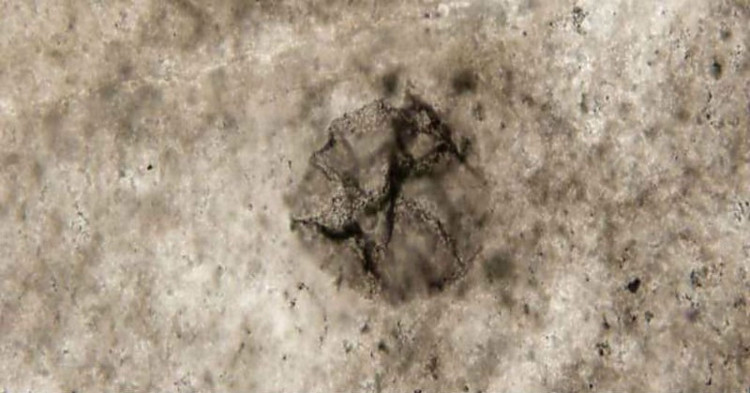Detection of 2.5-billion-year-old fossil microbes live without oxygen
Life on Earth survived thanks to oxygen, but surprisingly a few billion years ago, when oxygen had not yet appeared, there were germs of bacteria living.
Fossil bacteria were discovered at two isolated locations in South America and they were buried 2.52 billion years ago. This period takes place long before oxygen is present in the atmosphere. Instead of growing based on oxygen, like plants and multicellular organisms, this bacterium exists thanks to oxidative sulfur . Based on the bizarre ability of bacteria, scientists have suggested: life can be sustained on the planet with less than 1/1000 percent of the oxygen present on Earth. at the present time.
Fossils were discovered in a hard, silicon-rich rock layer in the Limpopo province's Kaapvaal Craton in South America. This area is one of two places in the world that has an Earth crust formed from 3.6 to 2.5 billion years ago, still accessible today. According to a research team that discovered bacteria in the University of Cincinati, sulfur dioxin bacteria are unusually large. These forms of life do not encounter any difficulties when living in conditions of hypoxia.

Living bacteria fossils do not need oxygen.(Photo: Andrew Craja).
"The sulfur bacteria we found are the oldest fossils ever recorded. And those findings, help us discover diverse, existent life forms and ecosystems. "The Great Oxidation Event" was a time of much of the evolution in the atmosphere, " said Andrew Czaja, one of the researchers.
Scientists believe that, before Earth is full of oxygen, the ocean is full of anaerobic bacteria . This type of bacteria can metabolize food but does not need oxygen or sunlight. Once the atmosphere is saturated with oxygen during the oxygen disaster, the bacteria are poisoned and they shrink as small as flies. But there is little direct evidence of anaerobic organisms until now.
"Fossils represent the oldest known species, living in deep and dark water environments. They existed 2 billion years ago, and new plants evolved 450 million years ago , " Czaja to speak.
Fossils were found in five locations in two areas far away from each other, storing large amounts of bacteria. The researchers say these are similar to modern gram-negative (Thiomargarita) bacteria . Microorganisms live in deep-sea environments, rich in sulfur and extremely low oxygen.
"Early bacteria are capable of consuming molecules, decomposing from sulfur-rich minerals. These minerals come from eroded and washed away rocks from the sea or from volcanic remnants on the shelf. ocean, " Czaja said.
Because of the lack of direct evidence of the types of organisms in the early Earth's early history, it was unclear when and how these bacteria appeared. But the team said that the fossil has just been found to give us clear clues about the bacteria that existed at least 2.52 billion years ago. The finding also helps us hope to find simple life forms on the planet in the absence of oxygen. The results of the research team were published in Geology.
Oxygen disaster (Great Oxygen Event)Cyanobacteria , the global inhabitants of early times, have taken photosynthesis and produced free oxygen. At the beginning, any free oxygen is produced, chemically captured by dissolved iron or organic matter (ie oxidizing those substances). When these substances are exhausted, free oxygen begins to accumulate in the environment and is the start of the GOE.
Free oxygen is harmful to anaerobic organisms and when the concentration is high it may have wiped out most of the Earth's anaerobic inhabitants at that time. Therefore, cyanobacteria are responsible for one of the largest extinction events in Earth's history. But research has shown that oxygen-producing microbial mats can create a thin layer of oxygen-containing water, one or two millimeters thick, in an oxygen-deficient environment even under thick ice and before starting to accumulate oxygen. in the atmosphere.
Eventually, aerobic organisms begin to grow, consuming oxygen and leading to equilibrium of oxygen in the atmosphere.
- Found oxygen stored by bacteria in fossil samples 1.6 billion years ago
- Burning too much fossil fuel, humans are eroding Earth's oxygen source
- Bacteria more than three billion years old hide in the cave
- Scientists have discovered the origin of oxygen in the universe
- Are people about to live without breathing?
- 'Fossil' 3.7 billion years old is once again shocking because it seems to be just normal stone
- Shark microbes do not protect against cancer
- Discovering fossil mushrooms about a billion years old
- Detection of large fossil skeletons
- Interesting secrets about oxygen
- First detected oxygen on comets
- Video: 3-year-old baby diving without oxygen tank at a depth of 10m
 Why do potatoes have eyes?
Why do potatoes have eyes? 'Tragedy' the world's largest carnivorous life: Death becomes ... public toilet
'Tragedy' the world's largest carnivorous life: Death becomes ... public toilet Tomatoes were once considered 'poisonous' for 200 years
Tomatoes were once considered 'poisonous' for 200 years Detecting microscopic parasites on human face
Detecting microscopic parasites on human face